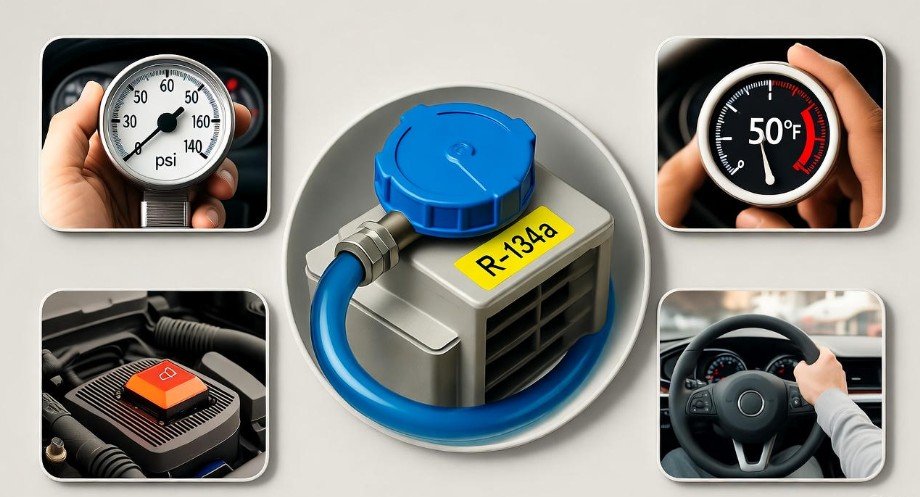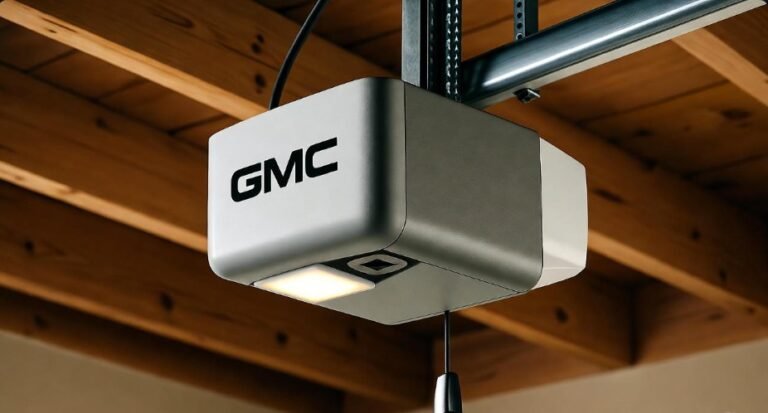How Many Cans of Freon Does a Car Take: The Ultimate Guide

Summer drives can be a dream or a nightmare depending on one small but crucial component in your car: the air conditioning system. Imagine cruising through a scorching afternoon while the AC sputters and blows warm air—it’s uncomfortable, to say the least. This is where Freon, technically known as refrigerant, steps in as the unsung hero of your car’s comfort. But many car owners wonder: How Many Cans of Freon Does a Car Take? It’s a question that seems simple at first glance but actually depends on several subtle factors.
Before diving into numbers, it’s important to understand what Freon really is. Many people use the term loosely, but Freon is technically a brand name for a type of refrigerant. Most modern vehicles use R-134a refrigerant, which has largely replaced older Freon types due to environmental regulations. So when we talk about topping up your car’s AC, we’re essentially talking about R-134a, not Freon in the broad sense. Think of it like calling all soft drinks “Coke”—it’s technically not accurate, but most people get the idea.
Why Your Car Might Need a Freon Recharge

Your car’s AC is like a finely tuned orchestra: each component has to work in harmony. If the refrigerant level drops, the system struggles to cool the air, and you feel nothing but warm disappointment. Low refrigerant levels often manifest as:
-
Warm air blowing from vents even when the AC is on full.
-
Longer cooling times for the cabin.
-
Hissing sounds or leaks near the AC compressor.
Most people don’t realize that recharging your AC isn’t just about comfort—it’s also about preventing long-term damage. Operating with low refrigerant can put extra strain on the compressor, potentially leading to costly repairs. That’s why knowing How Many Cans of Freon Does a Car Take isn’t just trivia—it’s practical knowledge for protecting your vehicle.
Factors That Influence How Much Freon Your Car Needs
The question of How Many Cans of Freon Does a Car Take doesn’t have a universal answer. Several variables come into play, and each vehicle is unique. Here’s what you need to know:
1. AC System Capacity
Cars come in all shapes and sizes, and so do their AC systems. A compact sedan usually has a smaller system compared to a full-size SUV or a luxury sedan. Larger systems naturally require more refrigerant. As a rough estimate:
-
Compact cars: 1.5 to 2 cans
-
Midsize sedans: 2 to 3 cans
-
Large SUVs/trucks: 3 to 4 cans
These numbers can vary, so always check your car’s manual for the exact specifications.
2. Existing Leaks
Even a tiny leak can drastically affect the refrigerant level. Freon doesn’t get “used up” in normal operation—it stays sealed inside the system. So if your AC is low, it’s usually due to leaks. Diagnosing and repairing leaks is crucial before adding more refrigerant. Otherwise, you’ll be pouring money into a system that can’t hold Freon, and the problem will persist.
3. AC System Efficiency
A well-maintained AC system runs efficiently and often requires less refrigerant than a neglected system. Regular maintenance, such as replacing the cabin air filter and checking the compressor, ensures optimal performance. A poorly maintained system may demand more Freon just to achieve the same cooling effect.
Think of your AC system like your smartphone battery. If you take care of it, it lasts longer and works better. Neglect it, and it drains faster, requiring more frequent “charging.”
How to Safely Recharge Your Car’s Freon
Many car owners are tempted to handle a Freon recharge themselves. With DIY kits widely available, it seems easy. However, it’s critical to understand the risks:
-
Overcharging can create high pressure in the system, damaging components like the compressor and hoses.
-
Undercharging results in insufficient cooling and puts extra strain on the system.
-
Handling refrigerants improperly can be hazardous to both you and the environment.
Professional mechanics use specialized gauges and equipment to determine the exact amount of refrigerant required. They also check for leaks, clean components, and ensure the system is operating efficiently. While a DIY recharge might save money initially, professional service guarantees long-term performance and safety.
Signs You Need a Freon Recharge
How do you know when it’s time to refill your AC system? Here are some clear indicators:
-
The AC blows warm or lukewarm air even on the coldest setting.
-
Reduced airflow from the vents.
-
Unusual hissing or bubbling sounds near the AC compressor.
-
Increased humidity inside the car on hot days.
Ignoring these signs won’t make them disappear. Acting promptly not only restores comfort but also prevents expensive damage.
Rough Estimates: How Many Cans of Freon Does a Car Take?
To give you a ballpark idea, here’s a simple reference table based on typical passenger vehicles:
| Vehicle Type | Approximate Cans Required (R-134a) |
|---|---|
| Compact Cars | 1.5 – 2 cans |
| Midsize Sedans | 2 – 3 cans |
| SUVs / Trucks | 3 – 4 cans |
| Luxury Vehicles | 3 – 5 cans |
These are general estimates. Your car’s manual or a qualified mechanic should always be your definitive guide.
Why Overfilling or Underfilling is Dangerous
Adding the wrong amount of Freon isn’t just ineffective—it can damage your AC system permanently. Overfilling can cause:
-
High pressure in the AC lines
-
Compressor failure
-
Refrigerant leaks
Underfilling leads to:
-
Poor cooling
-
Excessive wear on the compressor
-
Potential system breakdown
Think of it like seasoning a dish. Too much salt ruins it, too little leaves it bland. The perfect balance is essential.
Step-by-Step Guide to Recharging Your Car’s AC
Recharging your car’s AC with Freon is a task that seems simple on the surface but requires careful attention. If done incorrectly, it can lead to safety hazards or system damage. Here’s a clear, step-by-step guide for those considering a DIY recharge:
-
Check Your AC System Pressure: Before adding any refrigerant, use a pressure gauge to measure the current level. This ensures you know exactly how much Freon your system needs.
-
Locate the Low-Pressure Port: Most vehicles have a low-pressure service port clearly labeled on the AC lines. This is the safe entry point for adding refrigerant. Never use the high-pressure port, as it can cause injury or damage.
-
Attach the Can and Monitor the Flow: Connect the Freon can to the charging hose and slowly open the valve. Monitor the pressure gauge carefully to avoid overfilling.
-
Add Refrigerant Gradually: Refrigerant should be added in small amounts, with the AC running on maximum cooling. This allows the system to circulate the gas and prevents overcharging.
-
Check Cooling Performance: After adding the estimated amount of Freon, test the AC to ensure cold air is blowing consistently. If it’s still warm, there may be a leak or another system issue.
While this process is feasible for many enthusiasts, professional service is highly recommended. Mechanics have specialized equipment, including leak detectors and recovery machines, which ensure precise refrigerant levels and system safety.
Professional AC Recharge vs DIY
Choosing between a DIY Freon recharge and professional service is about weighing convenience against reliability. Here’s why many experts recommend going to a mechanic:
-
Accurate Measurement: Professionals use gauges to determine the exact refrigerant requirement for your car. This ensures optimal cooling and prevents damage.
-
Leak Detection: Technicians can spot leaks with UV dye or electronic detectors, something a DIY kit cannot reliably do.
-
System Inspection: Professionals inspect the compressor, hoses, and evaporator for wear or blockages, catching issues early.
-
Environmental Safety: Refrigerants are harmful to the environment if released improperly. Technicians follow EPA regulations to handle Freon safely.
In short, while DIY kits may be suitable for minor top-ups, professional recharge offers peace of mind and longevity for your AC system.
Common Mistakes to Avoid When Adding Freon
Many car owners unintentionally harm their AC systems during recharges. Here are some mistakes to avoid:
-
Overcharging the System: Adding too much Freon increases pressure, which can burst hoses and damage the compressor.
-
Ignoring Leaks: Filling a leaking system is like pouring water into a bucket with holes—it won’t solve the problem.
-
Using the Wrong Refrigerant: Modern cars mostly use R-134a, but older models might require R-12. Using the wrong type can ruin the AC system.
-
Skipping Maintenance: Dirty filters or clogged condensers reduce efficiency, meaning your AC won’t cool properly even with full Freon.
Avoiding these mistakes ensures your AC performs efficiently and lasts longer.
How Long Does a Freon Recharge Last?
The longevity of a Freon recharge depends on several factors, such as the system condition, driving habits, and environmental conditions. Generally:
-
Well-maintained systems: 2 to 3 years
-
Older systems or minor leaks: 6 to 12 months
Keep in mind that refrigerant doesn’t deplete naturally; any significant loss usually indicates a leak. Regular inspections help maintain performance and avoid frequent recharges.
Tips for Maintaining Your AC System
A properly maintained AC system reduces the frequency of Freon recharges and improves overall cooling efficiency. Some practical tips include:
-
Check AC performance regularly: Notice any decrease in cooling or unusual noises.
-
Replace cabin air filters: Clean filters improve airflow and system efficiency.
-
Inspect hoses and connections: Look for signs of wear, cracks, or oil residue indicating leaks.
-
Run the AC periodically in winter: This keeps seals lubricated and prevents leaks.
Small maintenance steps go a long way in extending your AC’s lifespan and reducing the number of Freon cans needed over time.
Frequently Asked Questions (FAQs)
1. How Many Cans of Freon Does a Car Take?
A typical passenger car requires about 2 to 3 cans of R-134a refrigerant. Larger vehicles or SUVs may need more.
2. How Do I Know If My Car Needs More Freon?
If your AC blows warm air, takes longer to cool, or shows signs of leaks, it’s time to check the refrigerant level.
3. Can I Add Freon to My Car Myself?
Yes, with a DIY recharge kit, but professional service is recommended to avoid overfilling and potential system damage.
4. How Long Does a Freon Recharge Last?
Depending on the system and usage, a recharge can last from a few months to several years. Frequent leaks will shorten this period.
5. What Happens If I Overfill My AC System?
Overfilling can lead to high pressure, compressor failure, and refrigerant leaks, potentially causing expensive repairs.
6. How Can I Detect AC Leaks?
Look for oily residue on hoses, hissing sounds, or reduced cooling. Professionals can also use UV dye or electronic leak detectors.
7. Is Freon Harmful to the Environment?
Yes, improper handling or venting of refrigerants like R-134a can harm the ozone layer and contribute to global warming. Always follow proper disposal methods.
8. Can I Mix Different Types of Refrigerants?
No. Mixing refrigerants can damage your AC system, reduce efficiency, and void manufacturer warranties. Always use the type specified in your car’s manual.
Final Thoughts
Knowing How Many Cans of Freon Does a Car Take is essential for any car owner who wants a reliable and efficient air conditioning system. While most passenger cars require 2 to 3 cans, factors like system size, leaks, and maintenance influence the exact amount. Regular maintenance, leak checks, and professional recharges ensure that your AC performs optimally, keeps you cool, and extends the life of your car’s components.
Remember, your AC system is more than just a comfort feature—it’s a mechanical ecosystem that deserves proper care. Handle it wisely, and it will reward you with years of cool, refreshing drives, even in the hottest weather.






